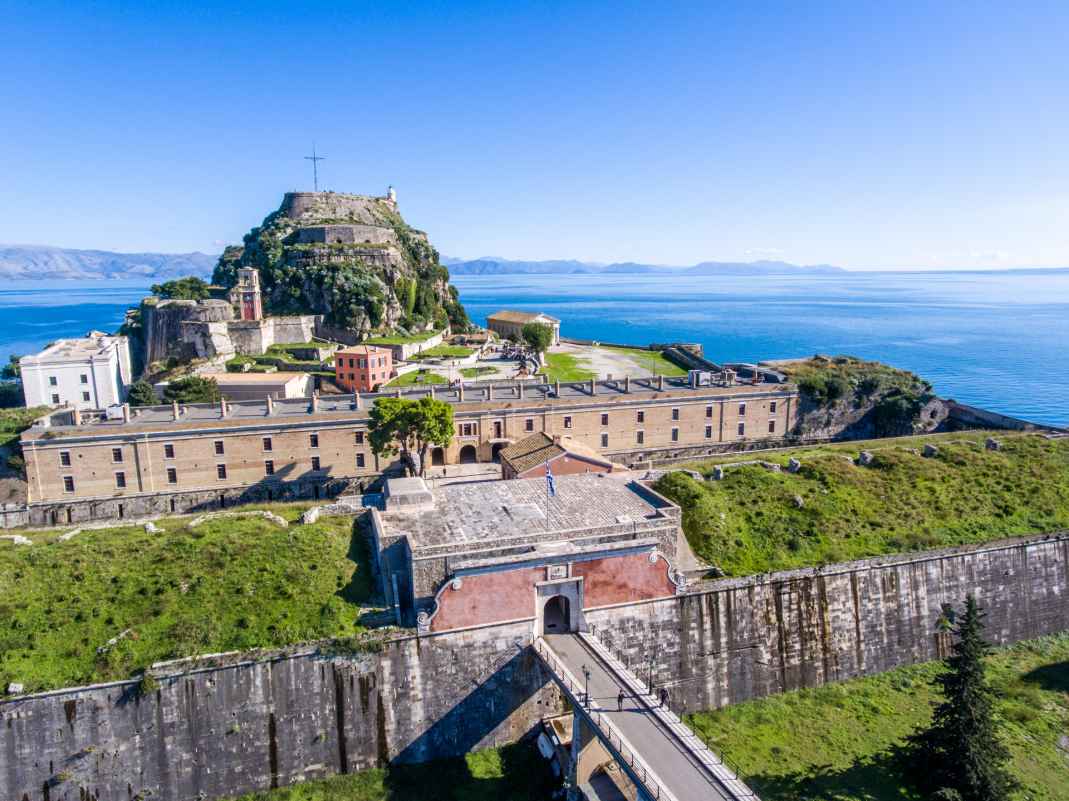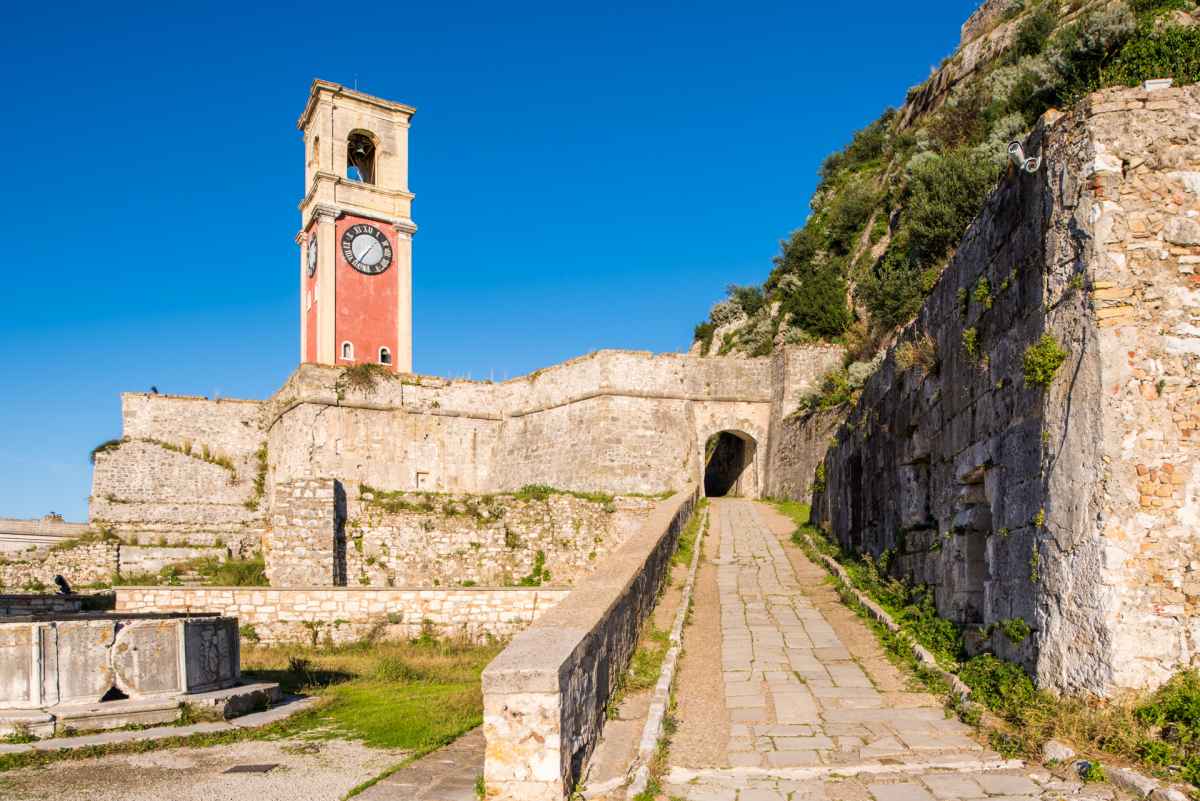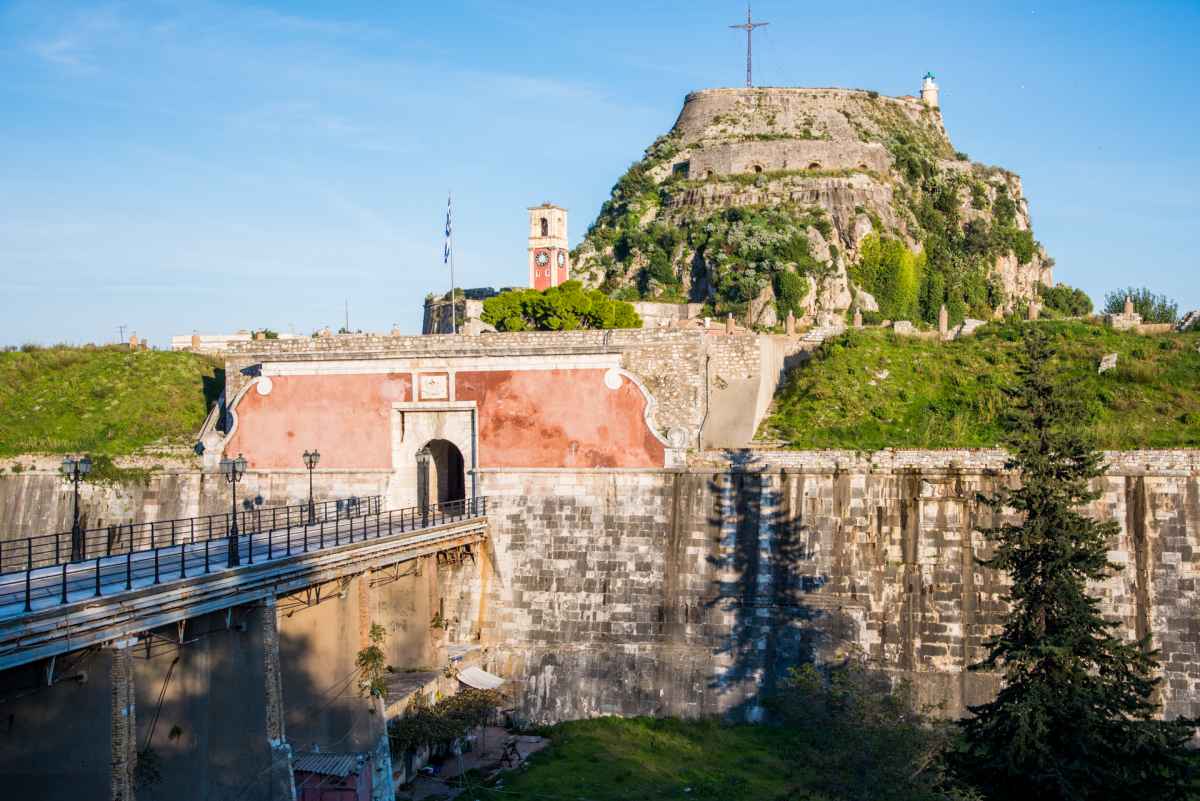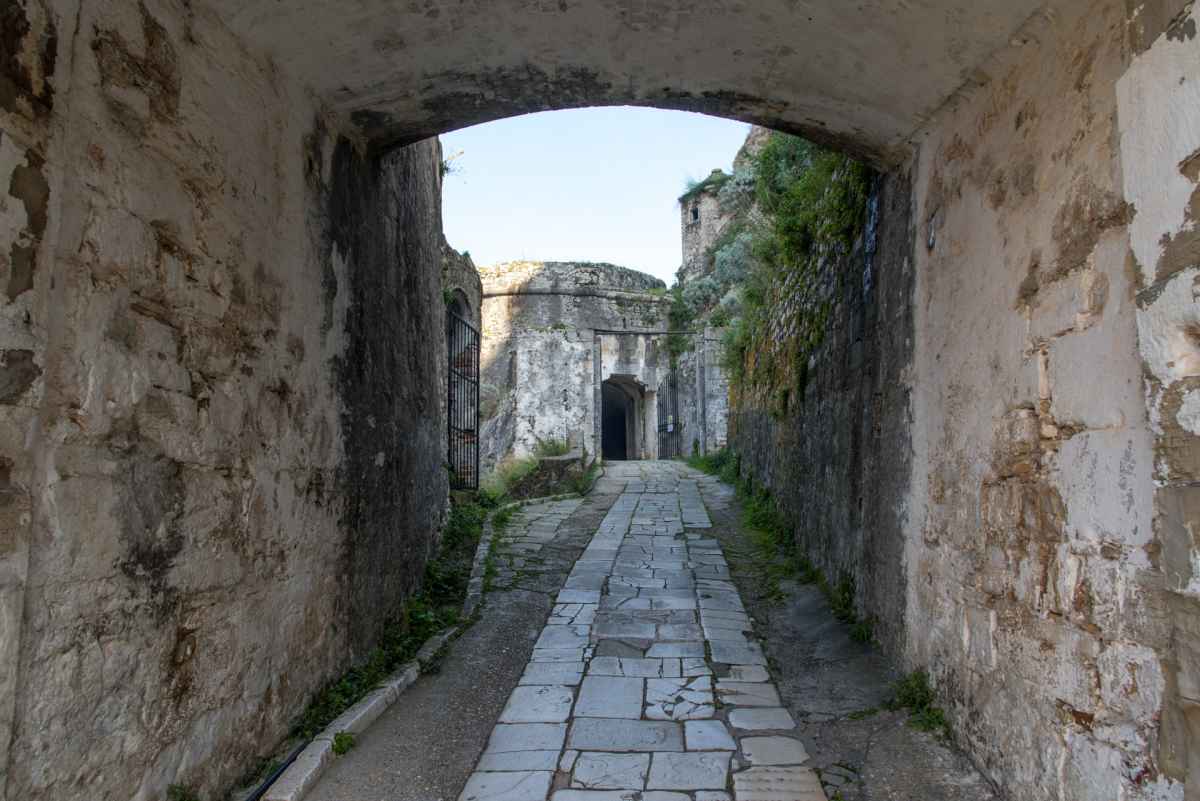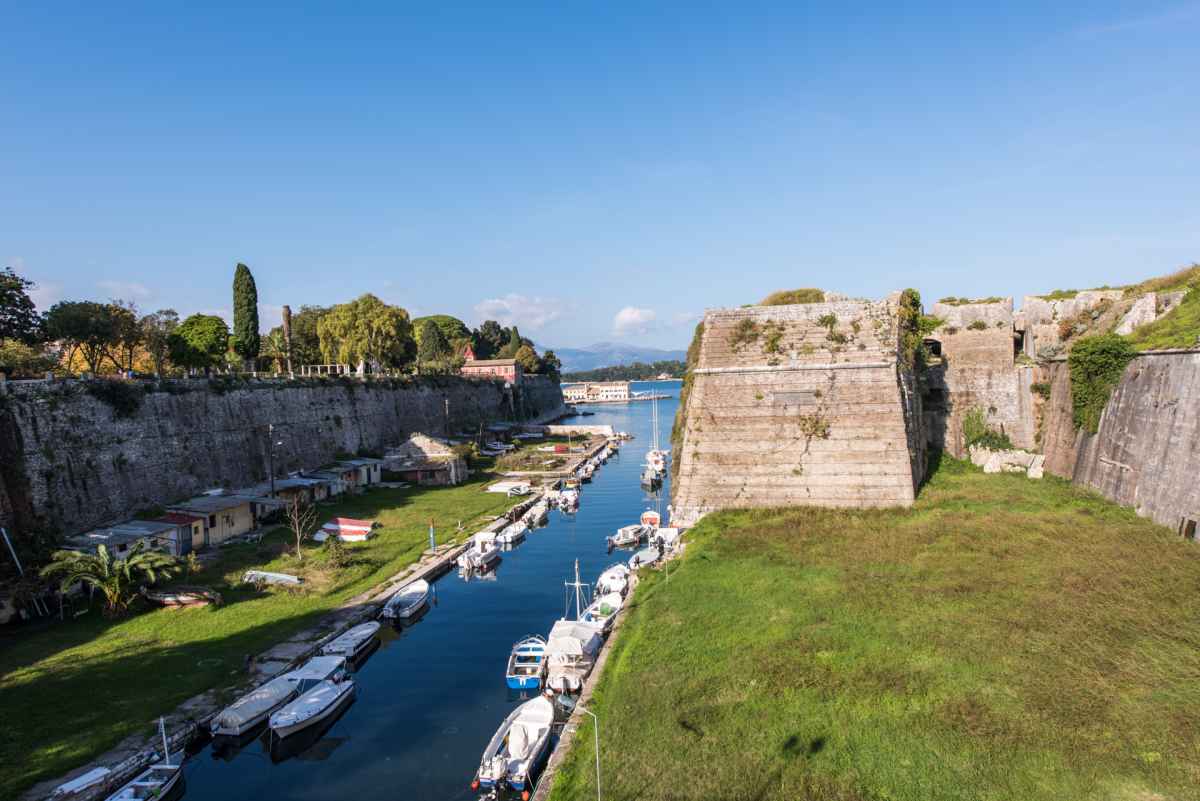During the 15th century, Corfu acquires great commercial and strategic significance for the Venetians. For this reason they built strong fortifications, mainly as defence against the Ottoman claims that did not cease to exist until the 18th century. The Old Fort or Fortetsa, located on a double-ridged peninsula, went through three historical phases of fortifications. During the Byzantine period the eastern hill is fortified, during the early Venetian period the peninsula is turned into an island and the western hill is fortified, and during the late Venetian period the fortification works are completed.
Ever since Byzantine times, the geographic location of the settlement of Corfu dictated its fortification. The Byzantines took the first steps and the Anjou followed. However, it was the Venetians who transformed this medieval city on a peninsula into an impregnable fortress.
For them, Corfu was of great importance for commerce and shipping, which were threatened by Ottoman aspirations and pirate raids. Circumstances dictated a more complete fortification. Venetian fortification works commenced in 1402 and continued until the fall of the Most Serene Republic of Saint Mark in 1797.
The initial works significantly altered the appearance of the fortress. At the end of the 14th century, a new period of fortifications commenced that transformed the peninsula of the Old Fort into an island. At the same time Spaniada, today’s large square of Corfu, was formed as part of the fortification plan.
Ever since the 10th century, due to limited space in the settlement and frequent demolitions of houses for the realisation of fortification works, a suburb started to develop outside the medieval city of the fortress, Xopoli, where today one will find Corfu’s old city. The adjacency of the fortified city to the unfortified suburb came in contrast to the military regulations of the period. For this reason, a large open space was created in order to leave the attackers exposed, by demolishing houses which led to the people’s fury.
The great Ottoman attack of 1537 and the long lasting siege of dire consequences to the people proved however that the fortification was outdated. After the siege, began the supplementation of the fortifications that lasted for the whole 16th century. During this stage of fortification, the artificial canal is widened once again, the fortifications of the tower’s citadel are strengthened using materials from the abandoned fortress of Kassiopi, and the flat open space of Spaniada is extended.
During the 17th century, the Fort assumes an auxiliary role and becomes an administrative and military center. Socioeconomic activities finally move to Xopoli, since as centuries went by, urban residences still in use at the Old Fort were very few.
After the fall of the Empire in 1797, the Old Fort remained the military center of each administrative authority. The major interventions on the fortress took place during the British rule, with the construction of important structures such as the brick building of the barracks. In 1864 the Ionian Islands joined Greece and the fortress followed the destiny of the Greek state.
Video
Virtual Tour
3D Reconstruction



